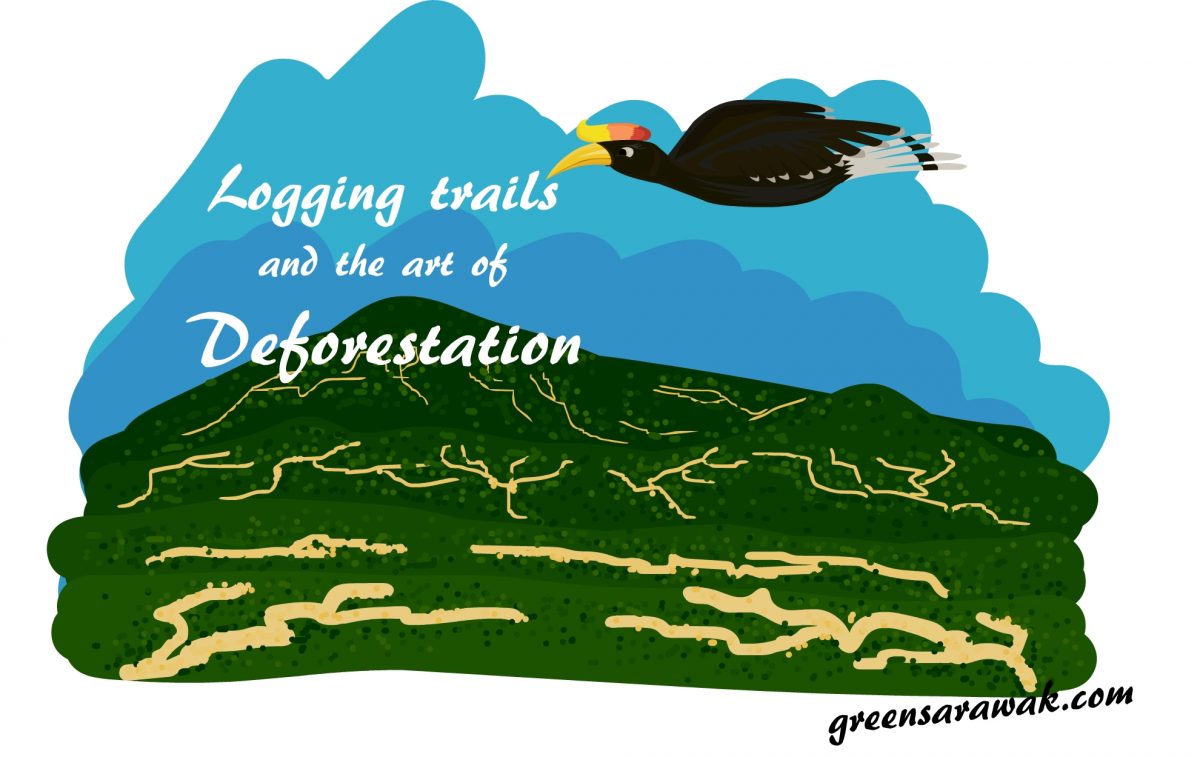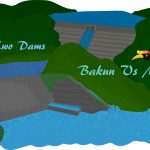logging in Sarawak is a serious business. Billions of revenue in sight, Billions of resources at stake. However logging doesn’t just means cutting down trees. Wonder what is happening during logging and what effects does it have on environment? It is an art of deforestation ?
Timber Industry in Sarawak
Sarawak is one huge state in Malaysia with abundant of natural resources. Sitting at the island of Borneo with 130million years worth of Rainforest, many high quality trees in prestige conditions tempting to be harvested.
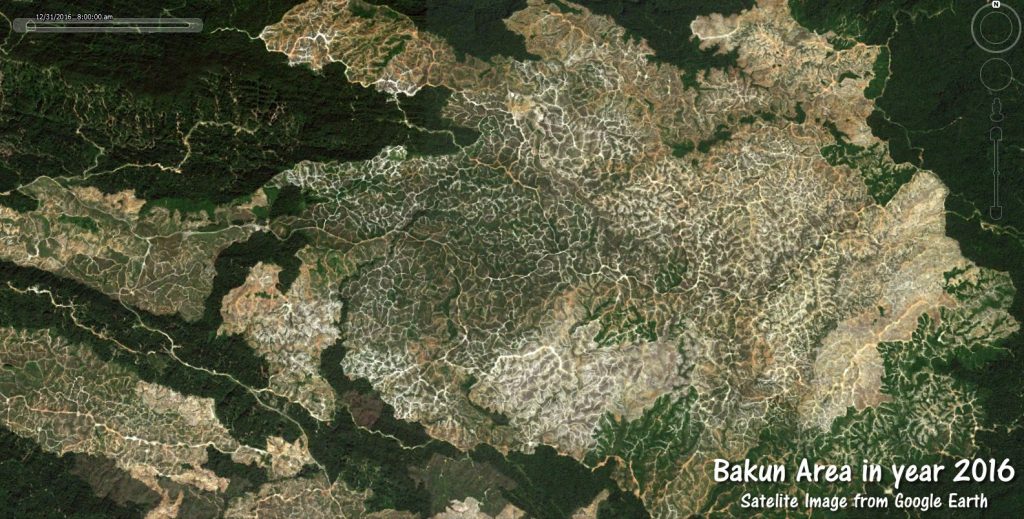
In Sarawak, timber industry contributed more than RM5 billion (RM5.9bil in revenue last year) of revenue through exports of timber products. It also generates RM550millions of revenue from various forms of fees and premiums to the state government. Furthermore it is a major industry sector involving in employment over 100,000 people in the state.
Taking timber industry out of Sarawak will have also severe consequences to the state, causing massive unemployment and revenue loss.
logging opens up new lands for further development and agricultural benefits.
Despite strict law governing the license for logging, there are many illegal logging around. Illegal logging involving loggers without license or loggers who have license but logging in areas not within the agreements. Illegal logging cause loss in revenue and loss in control of logging activities causing extensive damage to the native rainforest.
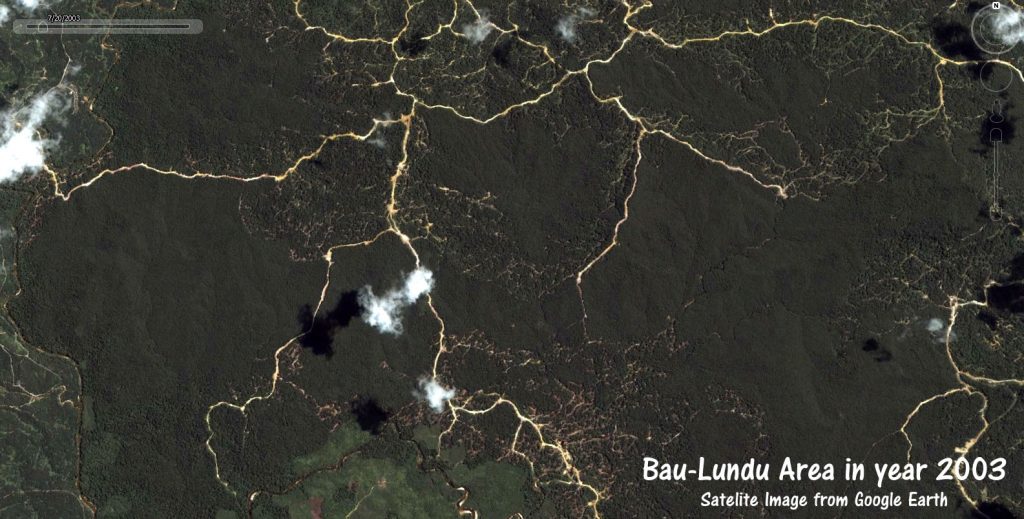

The logging process
Logging is not just cutting down trees. It involves a series of steps before we can get any of the wood products.
Before loggers are allow to cut trees in the state lands, they need to apply license to logging. Usually involves hefty amounts of royalties, premiums and fees. The loggers will have a specific areas allowed to log.
Then the timber company need to plan out the plans for effective tree harvesting, including terrain surveys, finding the best route to bring those heavy timber to the nearest collection spot for processing and exporting.
They will require to set up a logging camp deep in the forest. Remember that logging area are usually very deep inland with vert limited access to the human world. They need to set up a self sustained camp with enough food and drinks resources, including transport vehicles, repair and maintenance crew and harvesting crew before they can start their engines to harvest the trees.
Trees that fit the criteria of timber including size, type and nature of the trees are marked during the survey. The native rainforest or Primary Rainforest is saturated with high quality tall straight trees with less branching, hence are targeted as a prime target for logging as compared to secondary forest with trees of high branching and thick undergrowth vegetation.
Opening up native rainforest may face many obstacles such as unexpected animals encounter, potential loose ground with risk of cave ins and risk of exposure to deadly infectious disease.
Once they had settled down with all the equipment and plannings, they had to open up logging paths or logging trails for expansion harvesting territory.
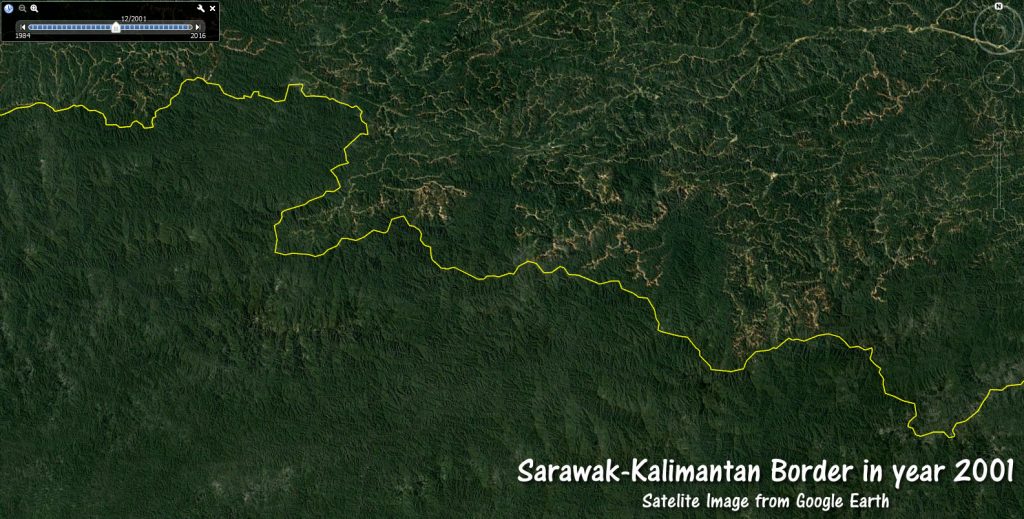
Logging path is very important aspect of logging as they will be the life line of logging, responsible for transportation of loggers, equipment, and also transfer of harvested logs. The dense forest ground peat and vegetation need to be clear away in order for smooth journey of heavy machinery during logging operations.
Logging trails exposed the bare earth for easy of transportation. Areas of weakness may be filled with gravels or soil. Many detours and Logging trails are made during expansion of logging territory. It creates a visible trails like network of termites tunnels when viewed from the satellite imagery above.
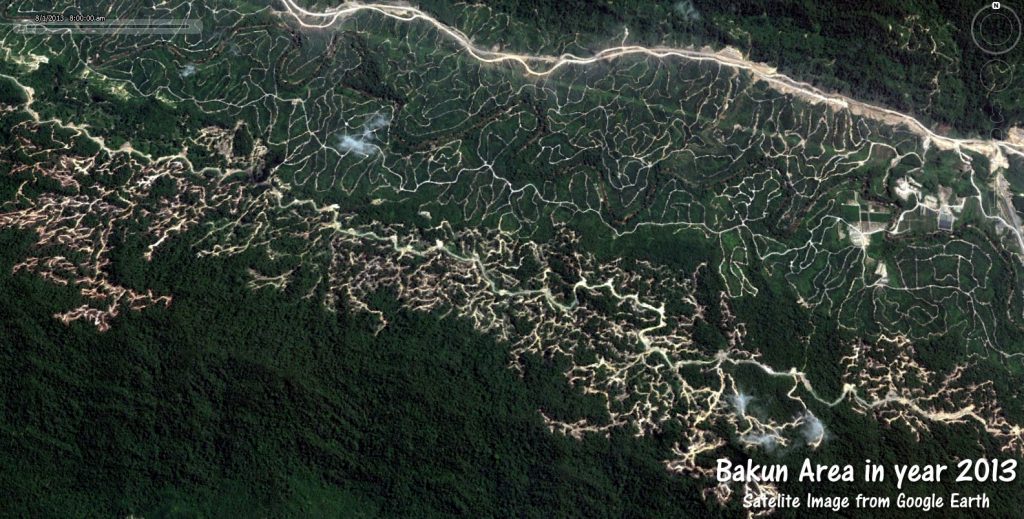
Harvested logs or timbers are transported to the designated collection points. Some may goes through multiple different trips of land or water transportation. Floating logs on rivers are sometimes often being used as it save allot of cost for transporting them.
In the final collection centers, logs are re-evaluate for its value by size, weight, condition, damages, type etc. This will determine the final destination of the logs. Weather to be processed into planks and blocks , slice into thin layer for plywood manufacturing, or crushed to fine splinters for other specific uses.
It is a long process indeed.
Logging trails
Logging create lots of trails in the forest. It is undeniable a need during logging process. It is also indication of an active Logging activity. Overtime the unused Logging trails will be overgrowth with vegetation and faded off.
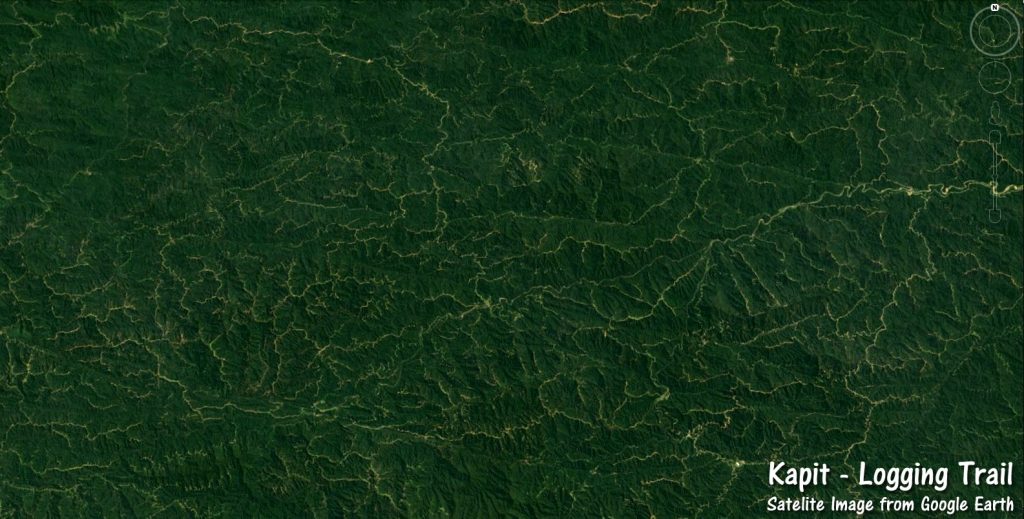
These trails indeed had exposed the forest floor to the open air. In Sarawak forest, uncountable logging trails across the forest of the states may reach thousands of miles long. These total added up areas can be equivalent to large acres of land being strip naked.
These naked lands lost their carbon sink capability. Exposed roads also throw out sand and dust particles into the air during active transportation, covering the nearby trees and reduce further efficiency of photosynthesis.
The bare open areas enhance the lost of water through direct evaporation from ground which bypass the usual cycle of evapoation in a typical native rainforest.
The rainforest trees have huge canopies on top and huge network of roots below. The trees helps in control release of moist into the atmosphere. Hence may cause reduced moist and water content in the rainforest which further reduced the functions of the rainforest to hold water.
These logging trails will act as a water runways during heavy rains and further reduced the water holding functions. Mud will gush into rivers, polluting them with muddy water.
When rainforest are dryer, risk of forest fire and root death increases. It starts a chain of reaction.
The paradigm shifts
There are extensive damage logging had done to the native tropical rainforest and it had gone beyond repairs. Many attempts to impede the deforestation of Sarawak.
When we initially go strong on protecting the native tropical rainforest had hit the greatest wall of all. There is no longer any left in the wood to say it is native tropical rainforest to be protect except those small remaining national parks scattered around.
Currently Government had adopted Sustainable Forest Management in their effort to prevent further damage to the preexisting rainforest, increase a sustainable logging which will safeguard the ecological nature diversity and economic needs.
Government have stop issuing new logging license. Those who already had active license are strictly called to abide the Sustainable Forest Management method. Example of the license are Timber License and License for Planted Forest.
Only tree more than 60cm dbh (diameter breast height) can be cut for dipterocarp species (Tall tropical hardwood trees), while 45cm dbh for non-dipterocarp species.
Loggers are encouraged to plant back trees that had been harvested to encourage regrowth of the rainforest, but it may take at least hundred years to see the outcome of regrowth rainforests with original height.
Permanent Sample Plot and 100% tree enumeration are also adopted. These permanent sample plots are designated restoration areas in which the growth and survival rate and performance of the planted seedlings are closely monitored.
A logfisher (A type of Timber Harvester that have a grappler to grasp timber and a pulley system to drag logs) is encouraged to be used instead of traditional Bulldozer which reduce the area of damage on the forest ground during initial transportation of logs across the forest.
It is a hard lesson that we had learned and it is time to think of what our next generation had lost. The legacy of 130million years of oldest tropical rainforest had been limited to few remaining national parks. It this what we want to left to tell the next generation?
Hence it is time to change our perspective and attitude to our mother nature. Sustainable Forest Management is the major shift towards better tomorrow.

